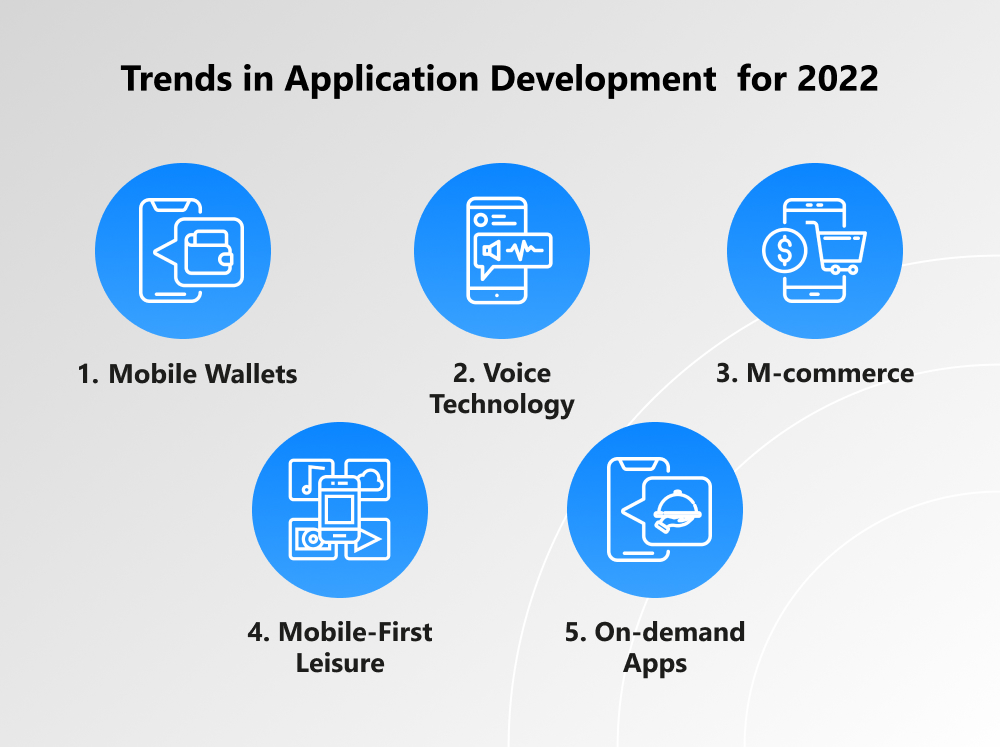Numerous apps and technologies surround us in everyday life. Checking the news, ordering food, buying tickets, meeting incredible people — thanks to mobile applications it has become much faster and easier to manage all these daily tasks. The Covid-19 pandemic has affected application users and pushed application development to a new level. So, what is application development?
How many stages does this process consist of? What will be the main trends for the development of applications in 2022? The answers to these questions already await you below.
written by:
Anton Rykov
Product Manager, Qulix Systems
Numerous apps and technologies surround us in everyday life. Checking the news, ordering food, buying tickets, meeting incredible people — thanks to mobile applications it has become much faster and easier to manage all these daily tasks. The Covid-19 pandemic has affected application users and pushed application development to a new level..
Contents
What Is Application Development?
Application development is the process of designing, building, and implementing application software that simplifies different tasks for a user. The focus on the end users' needs is what makes application software different from programming and system software.
Usually, when we speak about applications, we use the term “app”. Some people tend to apply this term only to mobile applications. But since nowadays many applications are available both for smartphones and desktop PCs, the term “app” has become more generic.
Also, while answering the question “What is application development?” it's important to note its difference from computer programming. The key distinction here is that the process of application development is much more complicated and includes a number of steps before and after writing a computer program. This set of steps is called a software development lifecycle (SDLC).
How to Develop an Application?
No matter what size your project is, how many specialists it involves, or what budget you have, the stages of application development always remain the same. So, let's have a closer look at each of them.
1) Strategy
The first step involves setting the app’s goal and target audience, choosing the most suitable platform (iOS or Android), and creating a project roadmap.
Speaking about the choice of a platform, two ways of application development should be mentioned — native development and cross-platform development. The first one refers to building a mobile app exclusively for a single platform and is used for making a high-performance application. The second way is more cost-effective and can be defined as the practice of developing software that runs simultaneously on multiple platforms.
2) Design
At the design stage, it should be decided how the app will work and what specific features and components it will have. It is significant to create an app architecture and target the audience taking into consideration the client’s preferences.
3) Development
This is when the actual programming starts. The stage of development includes selecting an app architecture, setting up a back end, choosing frameworks and libraries, designing API and database, and setting up repositories. Once everything is ready, the application can pass on to the next stage.
4) Testing
Trying out the technical performance of the app is a crucial step. This process involves bug scanning and confirming that documented requirements are met. QA engineers conduct the necessary type of testing and check application functionality and design.
5) App Release and Support
Once the functionality has been tested, the application is ready for release, i.e. the app can become available for users. The process of app submission will depend on the chosen store. On Google Play the application is likely to occur within a few hours, while reviewing on the Apple App Store may take up to several months depending on the quality of the app.
The stage of support involves monitoring user experience. After app submission, it is essential to keep track of the trends, upgrade the features according to the audience targeting requests, and process user feedback for future improvements.
Key Methods of Application Development
If you want to organize an effective process of creating applications, you can employ different methods. These methods are divided into three groups and each methodology provides solutions to all steps of application development.
Waterfall
If budgets for the project are fixed and the customer has explained his idea clearly, the waterfall method of application development will be a great option. It is based on careful planning and sequencing. The project manager distributes tasks among the team members according to the application features and functionalities described by the customer.
The name of the method is based on the comparison between the downward falling of a water flow and the organization of a working process — in both cases, we can observe a single-way movement. Once one stage of the software development lifecycle is completed, the team does not normally return to it.
The waterfall method is mainly used for big projects and for training junior programmers. But if changes happen all the time during the development, the use of this method becomes a waste of time for the team. In such a case, some other method should be applied.
RAD
RAD, or rapid application development, is the opposite of the waterfall method. It is based mostly on prototypes and its goal is to produce a working version of the application as quickly as possible to continuously iterate after that.
RAD's major advantage consists in its ability to adapt quickly to any changes. What's more, it's never too attached to a prototype and can easily change it to suit the needs of the customers. However, RAD requires highly-skilled specialists to work on a project (which increases costs) and needs a focus on adding features (which extends deadlines).
Agile
Agile application development is very similar to RAD but includes some changes to make it more suitable for larger projects. An iterative development approach and staged focus on building features make Agile different from the other methodologies.
The sprint technology, which means the setting of time for a certain feature to be built, tested, and presented, is crucial for the Agile method. It helps the team to stick to the schedule and meet the deadlines. This method works great for large-scale planned out projects headed by active leaders.
Since Agile doesn’t focus on prototypes and presents the results after the sprint is over, the customer can see only finished work. For some projects, this feature may be viewed as a disadvantage.
Top 5 Trends in Application Development for 2022
The first apps were developed in the 1990s. Obviously, since that time the process of application software development has undergone many changes. Application developers have managed to simplify and accelerate it which has led to the mass spread and release of mobile apps for any taste and budget.
But it seems the Сovid-19 pandemic has provoked an even greater shift in the application development industry. App developers have been very busy creating new mobile apps to suit people's needs during the pandemic. Virtual business meetings and health visits, remote work and distant education, online dates and game nights have turned into the only solution to maintain a habitual way of life.
As long as the pandemic continues, the application development industry will keep thriving. So, let's highlight the most significant trends in app development for 2022.
Mobile Wallets
The fintech industry has been developing at a swift pace and digital wallet use will keep increasing in the future. The idea of paying for an item with a single click appeals to customers, that's why they are likely to turn to such services more often.
According to the ACI Worldwide statistics, the use of mobile wallets has increased nearly 50 percent (49%) from 2020 to 2021. The most well-known apps and services in this sector include PayPal, Venmo, Google Wallet, and Cash App, but still, there is a large space for development left.
Voice Technology
Among other widely-used tools, you can also find voice technology. The reasons for such popularity are quite simple — a voice user interface, voice search, and voice shopping consultants simplify the communication process and people's lives. So, catering to this expanding user segment is a step that the business can take to increase sales and boost customer satisfaction.
M-commerce
Online shopping is not an innovation. But the COVID-19 pandemic has brought several brand-new areas of focus to m-commerce. The virus threat and lasting lockdowns have forced people to try buying online for the first time, and many of those people will actually continue using m-commerce apps to shop even after the pandemic recedes.
Mobile-First Leisure
Before the pandemic, people used to spend around 3 hours on their phones every day. In 2021, this figure has increased up to 4 hours. The applications for fun and entertainment have always been popular among people of different ages and walks of life, but during the first lockdowns, even the most reluctant users turned to this way of distraction. So, it's expected that this tendency will only grow.
On-demand Apps
Due to the pandemic, more businesses started to use applications to sell their goods and services. The list of on-demand applications includes fashion and beauty service apps, food and medicine delivery, apps for education and sport. People got used to easy access to their favorite products, so it's highly predictable that the demand for such apps will increase next year.
As long as the mobile industry flourishes, numerous trends and features will keep conquering the digital world. But if you grasp the essence of application software development, you'll easily adapt to new changes.
If you want to find out more about the application development process, contact our specialists. Qulix Systems always keeps up-to-date with modern technologies and key developments in the field of app creation and testing. We are ready to offer perfect solutions for your projects.

Contacts
Feel free to get in touch with us! Use this contact form for an ASAP response.
Call us at +44 151 528 8015
E-mail us at request@qulix.com










